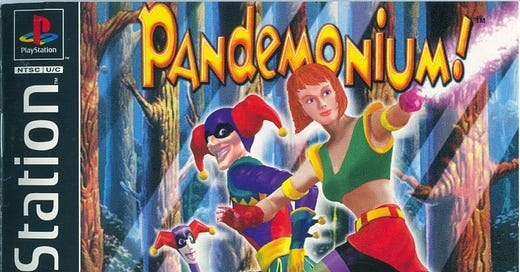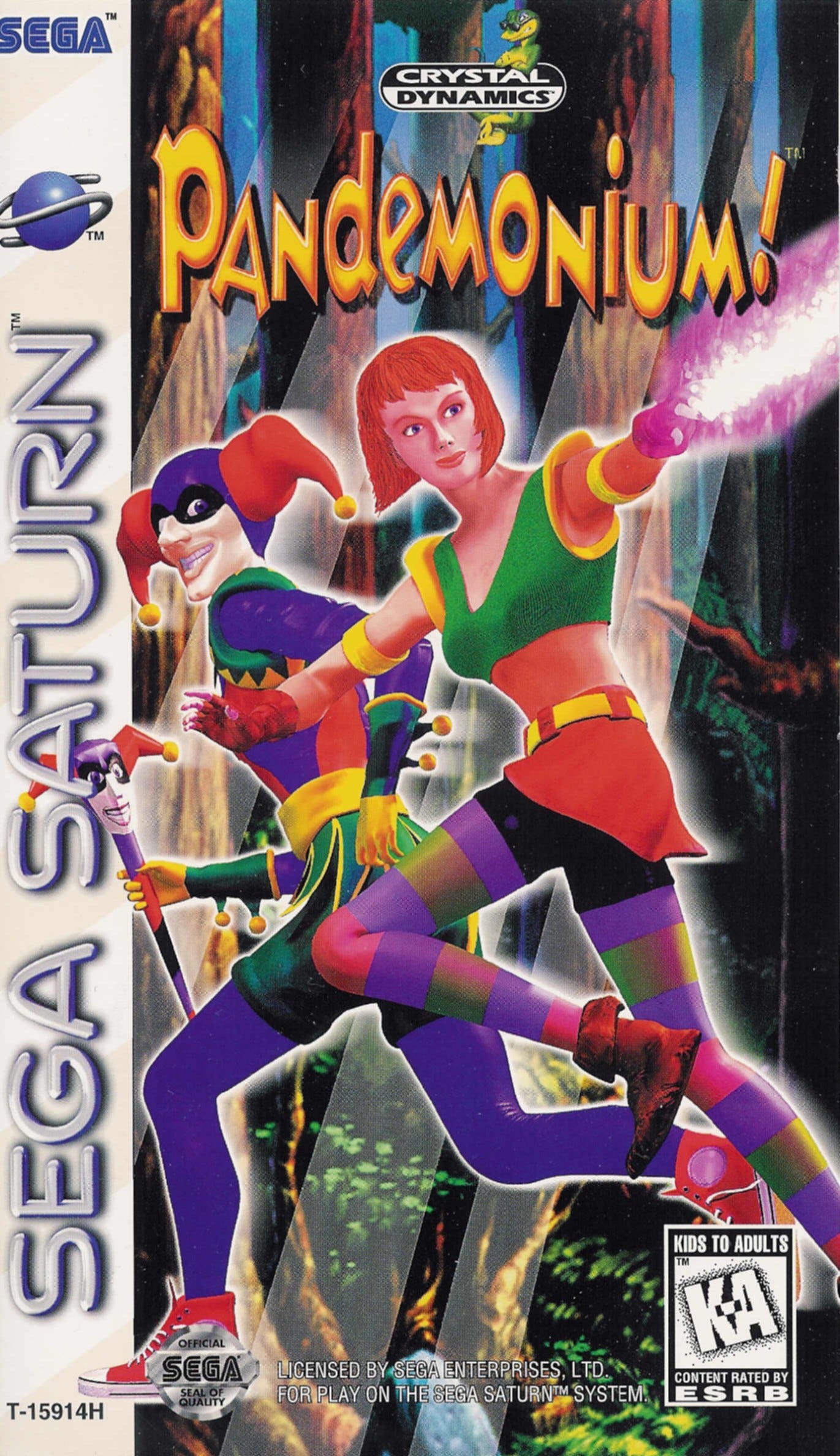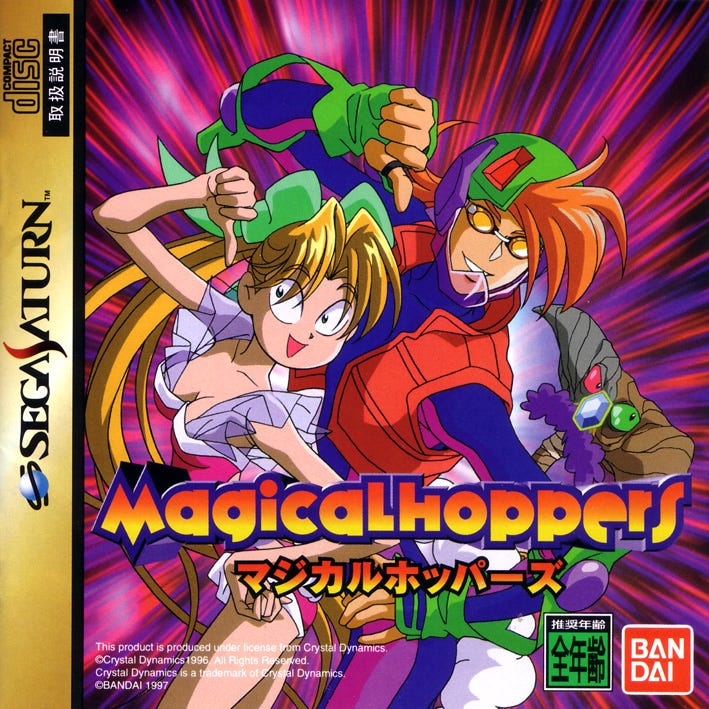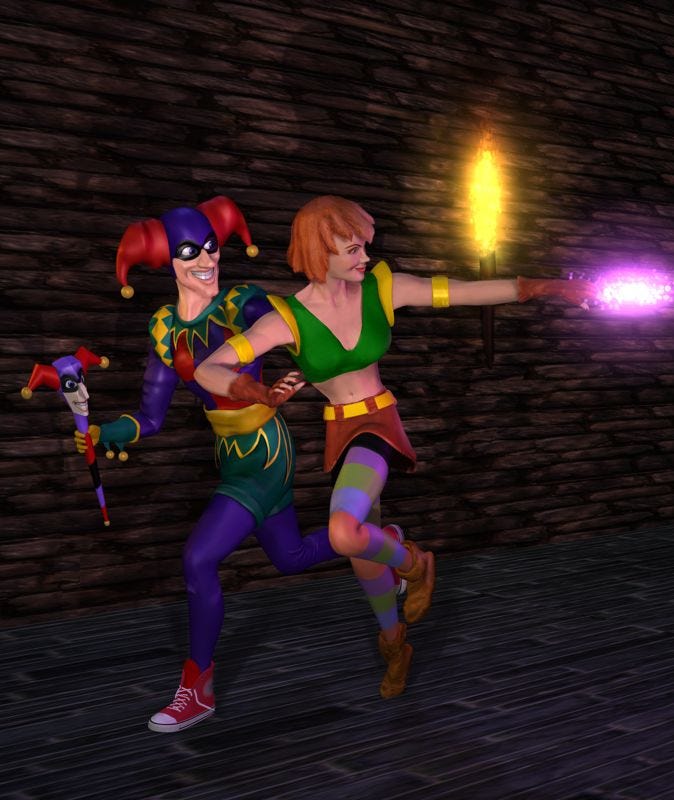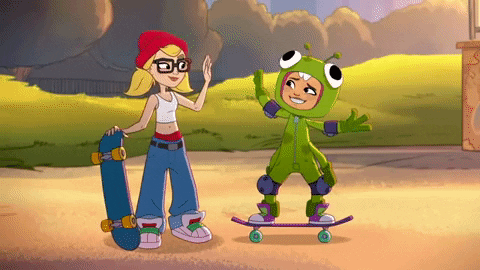Today, we are reviewing a 1996 (1997 in the case of Sega Saturn and Windows PC) platformer developed by the still-active Toys for Bob (initially part of Activision Blizzard in 2005 but later became an independent company) and published by Crystal Dynamics (the same company that developed the Gex trilogy, which we previously reviewed). The Japanese release was published by Bandai (today Bandai Namco), and the still-active Japanese animation studio Gonzo did the animation. Nothing special, they call it Pandemonium! (Magical Hoppers in Japan) because… that is its name. Burke Trieschmann is the game’s composer. As usual for Crystal Dynamics games, the European publishing rights were given to BMG Interactive (today Rockstar Games). However, BMG decided against publishing the Saturn version, so Sega of Europe purchased the rights from BMG and published that version. The game was also ported to Jumpin’ Jack Software (now closed) for the Sega Saturn.
The game features Fargus, a joker in his perpetually untied red Chuck Taylor sneakers (Greg Proops — EN, Yasufumi “Koji” Tsujitani — JP, deceased 2018; called Clam in the Japanese version) and his stick-puppet Sid (Greg Proops — EN, Kenichi Ogata — JP), and Nikki (Helen Keaney — EN, Mika Kanai — JP; called Guppy in the Japanese version), a sorceress who unwittingly casts a spell that destroys the town. The goal of the game is to reach the Wishing Engine, where they can wish the town back to normal. For each level, the player can choose which character to be. Each has a special move — Fargus can deliver a special spinning attack, and Nikki can double jump. The game consists of a great variety of unique gameplay objects, such as watermelons, clouds, spider webs, and logs.
Pandemonium! employs 2.5D gameplay; while the game renders polygons in a typical 3D fashion, gameplay is 2D. The area of gameplay is as a two-dimensional surface twisting and bending in a three-dimensional world. Occasionally, this surface will overlap itself. There are segments where the path branches, allowing the player to choose their course.
Enemies are generally defeated through the usual platform jumping method of bouncing on the enemy’s head. There are power-ups located in each level, with varying effects. One is a freeze ray which turns enemies into ice, while another is a shrink ray which reduces the size of enemies to the point where the player character can step on them. The Japanese version of the game features character design by the manga artist SUEZEN (link goes to Japanese Wikipedia).
That’s it for the review of this platformer. Do me a big favor while you want some of the companies to take anger management classes and seek professional help (as they should face permanent firings or have them replaced with either a black CEO or black support leads), and have them refrain from saying “I don’t understand what you mean” permanently for the sake of autistic people everywhere including those with bipolar disorder — don’t forget to subscribe (it’s free!). Thanks for reading.


